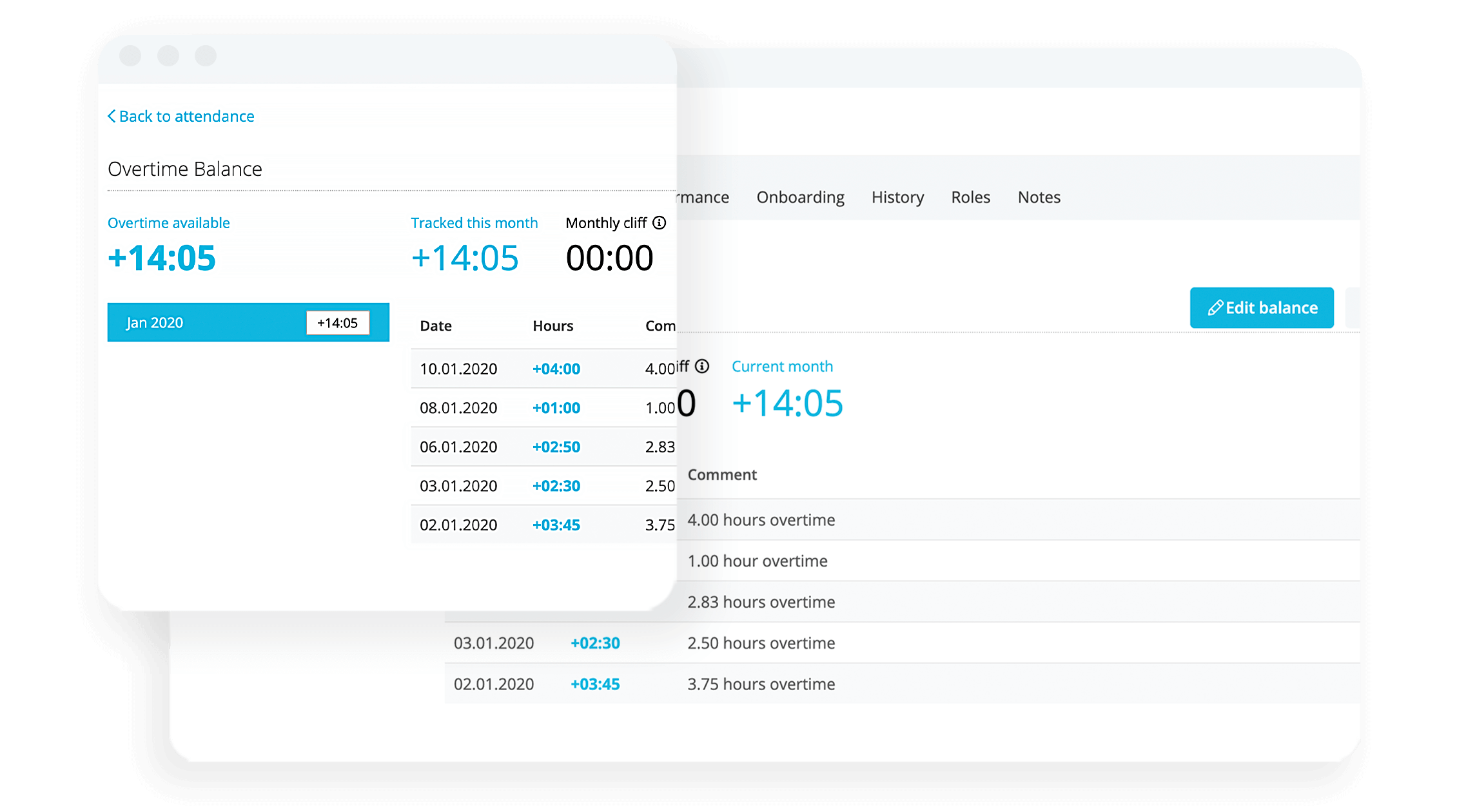Does a hybrid work model ‘work’ for your organisation?

When I think about the ‘offices of tomorrow,’ I don’t really see it as a black-and-white matter anymore. There’s no ‘remote only’ or ‘office only’ for everyone. Instead, hybrid ways of working will truly take shape, and why not? They are more responsive to the different needs of employees and can be a key way to increase their satisfaction at work.
In this article, I’ll show you why hybrid working is the model of the future and offer a handy framework you can use to evaluate whether it’s the right fit for your organisation. – Ross Seychell, Chief People Officer at Personio
Are there costs currently hidden in your HR? Download our guide to discover, and fix, them today.Hybrid work models are on the rise
According to Gensler’s ‘Global Workforce Surveys,’ 67% of workers in the UK prefer a hybrid work model moving forward. Three days in the office and two working from home is seen as the optimal split to combine the best of both worlds: social contact and easier collaboration, on the one hand, more flexibility and freedom on the other.
How you design your hybrid working model ultimately depends entirely on your culture and the goals you want to achieve with hybrid working. There are very different hybrid models, so every company needs to decide for themselves what kind of split makes sense.
For all those who still have doubts about the concept of remote work: Studies show that employees who work from home are more productive and better able to reconcile family and professional life. So, optimal conditions for a mixed, hybrid model.
The 4 advantages of a hybrid model
Your employees all have different personalities and ideas about where and how they work. No rigid, one-size-fits-all model will ever completely meet the needs of all your employees.
Hybrid work models, on the other hand, give your employees the opportunity to find the best way of working for them within a framework. For your company, this means a satisfied and motivated workforce – and the increased productivity that comes with it.
It also allows companies to …
Retain talent through a more attractive working model.
Create added value for all parties involved.
Pay towards a more flexible, digital, and purposeful future of work.
Track your teams' time seamlessly

Enable your employees to enter their working hours in an efficient, legally compliant and secure system. See working hours at a glance across your company.
Get Smarter Time TrackingDoes a hybrid model suit your organisation?
From the very beginning, let’s answer the following: Which approach, i.e. which distribution of home office and office work, do you want to choose? Should this approach apply company-wide and equally across departments? Or, would you rather set guidelines, which each team can then adapt to their own needs?
Also, consider your team and company structures: Where do dependencies exist that don’t allow for a hybrid setup? Is one department perhaps dependent on the presence of another?
Once this foundation is laid, you can truly start in earnest. In general, there are nine pillars that are important in evaluating whether a hybrid model fits your organisation. The further you get on the scale, at “5,” the greater your fit.
1. Investments
For a hybrid model, your company should create an appropriate financial framework. There are some key costs to consider here: Equipment, tools, salary, and travel expenses.
Where is your company on the following scale? Where do you want it to be in 12 months?

2. Legal
If you are a company that offers remote work, you have to comply with important legal requirements. This ties up capacity both in HR and legal — not only initially, before the model goes into effect, but also on an ongoing basis.
Where is your company on the following scale? Where do you want it to be in 12 months?

3. Locations
This pillar is about deciding how many locations your employees may work from. Is it just their home and office, or do you offer a third or fourth alternative? From which countries are they allowed to work?
Where is your company on the following scale? Where do you want it to be in 12 months?

4. Team structure
Two questions play a central role here: Does your team structure allow employees to work from different locations and be “mixed”? Or do certain people need to see each other on a regular basis?
Where is your company on the following scale? Where do you want it to be in 12 months?

5. Culture
Your culture plays a crucial role in the decision for or against a hybrid model. Aspects such as trust, openness, responsibility, team spirit, agility, proactivity, and good communication are important.
Where is your company on the following scale? Where do you want it to be in 12 months?

6. Infrastructure
For a hybrid model to be successful, all the trappings must also be right, e.g. IT, tools, and adapted meeting rooms. This is the only way to create the necessary flexibility, a good flow of information, and smooth processes.
Where is your company on the following scale? Where do you want it to be in 12 months?

7. Communication
In a hybrid model, communication is the name of the game. Do you have appropriate internal guidelines, tools, and processes to ensure a good flow of information across locations? How do you share news — and when?
Where is your company on the following scale? Where do you want it to be in 12 months?

8. Smooth processes
This includes all personnel processes, but also common considerations of how you can simplify project management and creative processes, e.g. brainstorming, in mixed teams.
Where is your company on the following scale? Where do you want it to be in 12 months?

9. Hiring
A hybrid model allows you to hire employees from anywhere. Evaluate where you want to hire and what legal requirements you might need to meet.
Where is your company on the following scale? Where do you want it to be in 12 months?

4 tips for a successful hybrid model
Finally, I’d like to share a few tips along the way that will make your cross-location collaboration easier…
Build a solid foundation
If your hybrid model is built on a company-wide approach, it should be similarly workable for all departments (to create fairness).
Establish your own standards for collaboration and create consistent expectations for it, e.g., where online meetings become standard.
Develop your leaders
Train managers to help employees transition to remote work. To do this, they need emotional intelligence and good online communication skills, among other things.
Identify leaders who are innovative and experimenting on their own with new tools, routines, and approaches to remote leadership – and share them with other colleagues.
Create a culture of trust
Strengthen autonomous working and give employees more responsibility for projects, in coordination with their managers.
Focus on work results rather than hours worked.
Always test, review, and optimise
You should also be prepared to make changes over time and communicate them to your employees. The pandemic was our largest pilot yet for new ways of working — but, what we need to be is open to making adjustments in the future.

About Ross Seychell
As a business leader with 20 years of HR experience, I have a strong passion for how a company’s most important asset – their people and culture – enables them to unlock and achieve their mission. After building out workplace strategies at high-growth companies such as Wise and King, I joined Personio as Chief People Officer to help us become the leading HR platform and tech employer in Europe.

